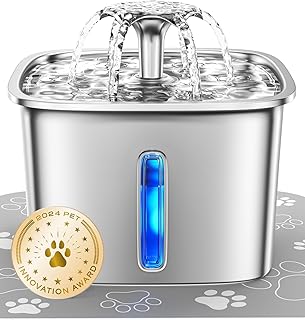5 important factors worth considering when looking for the best dog shock collars
When it comes to dog training tools, using a shock collar raises important ethical questions and practical concerns. Understanding the factors that affect our dogs’ well-being and behavior is important when considering shock collars. We need to think about how effective and safe they are, as well as the ethical issues and training methods involved. Exploring these factors can help us better understand the use of shock collars in dog training and the impact they have on both dogs and their trainers. It’s important to consider all aspects of shock collar use to make an informed decision.
See our guide to the best dog shock collars.
Range of stimulation levels
When choosing a shock collar for your pet, it can be tough to figure out the right level of shock. Not all dogs react the same to shocks. Some may need just a little shock to learn, while others need a stronger shock. Adjustable shock collars let you customize the training for your dog’s needs, making it a more personal and kind way to teach them.
It’s important to be careful and not use shock collars too much, even if they have different levels of shock. Training should focus mainly on rewards and positive reinforcement, with shock collars only used when necessary. Using shock collars too often or at high levels can harm your dog and make them trust you less. By understanding your dog’s behavior and using shock collars as a last resort, you can create a balanced training approach that builds a strong relationship based on respect and trust.
Size and weight of the collar
When picking a shock collar for your dog, it’s important to consider the size and weight of the device to make sure your dog stays comfortable and safe. If the collar is too big or heavy, it could hurt your dog’s neck or cause discomfort when used for a long time. A lighter and properly sized collar will let your dog move easily and feel more comfortable, making training a positive experience focused on communication instead of discomfort.
Also, choosing a shock collar that fits well with your dog’s size and breed will help avoid distractions during training. By choosing a collar that fits into your dog’s daily routine, you can deal with behavior issues without stressing out your dog. Prioritizing the size and weight of the collar shows that you care about your dog’s well-being and want to use positive reinforcement techniques for a good relationship based on trust and understanding.
Waterproof or water-resistant design
Choosing a dog shock collar can be tough, especially when deciding between waterproof and water-resistant designs. Waterproof collars are the best choice for durability and reliability, especially if your dog loves to play in the water or you live in a rainy area. With a waterproof collar, you won’t have to worry about it malfunctioning during outdoor activities or trainings.
On the other hand, water-resistant collars may seem like a cheaper option at first, but they may not hold up well over time. While they can handle some light rain or splashes, they might not withstand heavy moisture or being submerged in water. Investing in a waterproof collar shows you care about your dog’s safety and comfort, ensuring the collar stays reliable in any weather.
Ultimately, choosing a waterproof shock collar ensures a worry-free experience for both you and your dog. It’s a valuable investment that promotes effective communication and trust between you and your furry friend.
Battery life and type
When you’re looking to buy a dog shock collar, it’s important to think about the battery it uses. Choosing a shock collar with a long-lasting battery can really help when you’re training your dog. A collar with a rechargeable battery can save you money and make sure it’s always ready when you need it. It would be frustrating if the battery died in the middle of training, which could confuse your pet and slow down progress. So, it’s worth investing in a shock collar with a reliable battery to help with your training.
The type of battery in the shock collar can also make a big difference. Lithium-ion batteries are known for being tough and holding a charge for a long time. They are lightweight and eco-friendly, making them a good choice for pet owners. Plus, lithium-ion batteries don’t suffer from memory loss, so they provide consistent power for smooth training sessions with your dog. By focusing on battery life and type when picking out a dog shock collar, you can improve the training process and keep your pet safe and happy.
Training modes and features
When choosing a dog shock collar, the different training modes and features are important for how well it works. Some people think shock collars are cruel, but if used correctly with good training methods, they can help fix bad behavior. Look for collars that have different training modes like vibration and sound along with shock. This variety suits different types of dogs and allows for personalized training. Also, features like adjustable shock levels and a wide range of coverage help you adjust the collar to fit your dog without causing discomfort.
Think about getting a shock collar that has extra features like a remote control and is waterproof for versatility and durability. These features make training easier because you can correct behavior in different places and weather. Also, look for collars with safety features like automatic shut-off and safeguards to prevent accidental shocks. These keep your dog safe and show you are a responsible pet owner. To successfully train your dog with a shock collar, you need to understand its modes and features to create a safe and supportive learning environment for your furry friend.
Conclusion
When thinking about using shock collars on dogs, it’s clear that the harm they can cause is more than any possible benefits. It’s important to focus on training methods that use positive reinforcement to build a strong bond between people and dogs, creating trust and respect. We should always prioritize the well-being of our furry friends when training them, making sure to create a caring and kind environment that helps them learn good behaviors without needing harsh tools. By being empathetic and understanding instead of punishing or scaring our dogs, we can have happy, loving relationships with them. Want more info on frame for puzzle 19×27, check the best frame for puzzle 19×27.




